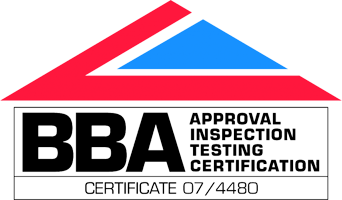Monthly Archives: October 2023
Advanced Drainage Systems UK seeks to minimise SuDs maintenance
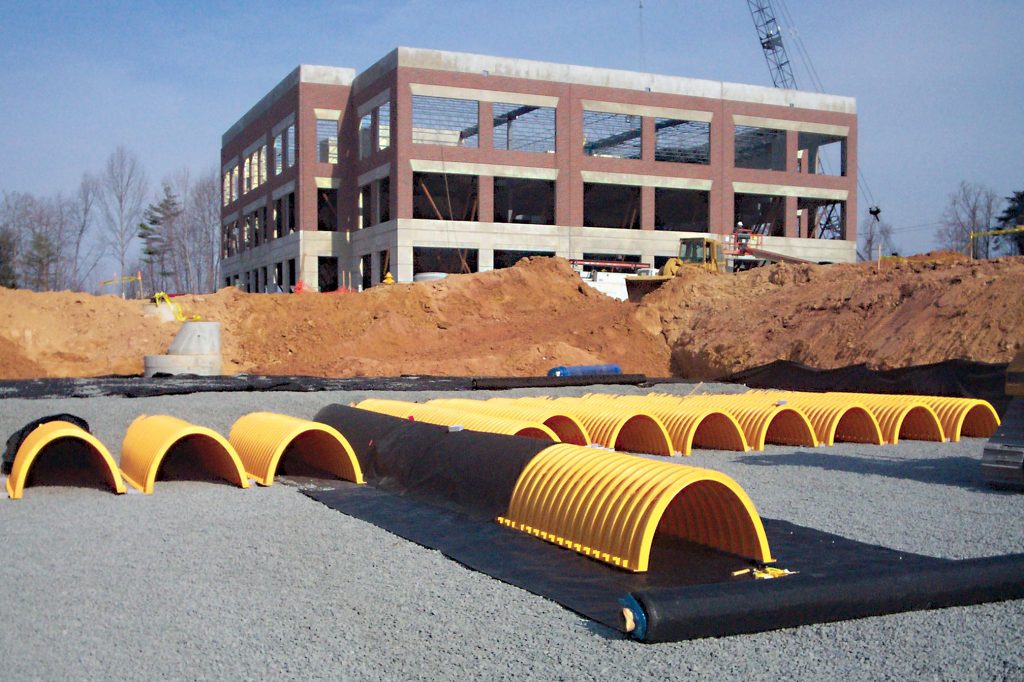
Designers need a better understanding of the maintenance requirements of different SuDS components to ensure that the systems they design will perform as intended, Advanced Drainage Systems UK manager Stuart Crisp, reports.
The issue of SuDS maintenance has always been a thorny one. Research suggests that the question of responsibility for the maintenance, and the cost of it, has been a prime factor in their slow uptake in the UK.
With the government’s intention to implement Schedule 3 of the Flood and Water Management Act 2010 in England, making the installation and adoption of SuDS mandatory, concerns about
maintenance issues have again come to the fore. Developers, designers and installers need to understand the maintenance implications for alternative solutions considered for a project and then offered to the adopting body responsible for the long-term operation of the SuDS asset. These are in addition to, for example, hydraulic performance, structural integrity and water quality. For underground attenuation devices, these vary significantly.
The impacts of poor maintenance regimes and difficult to clean systems can be significant, increasing the risk of blockages – leading to loss of capacity and flooding – and pollutants washing out into water bodies.
Guidance
The SuDS Manual, Ciria C753, recognises that underground attenuation crates are “difficult to clean” and that their capacity will reduce over time. Section 21.5.3 of the manual recommends that the size of crates should be increased by 10% to allow for accumulation of sediment. This applies even when a maintenance programme is deployed, since it is not always possible to remove all sediment during cleaning. Commercial developments, high density residential development, car parks and highways face the highest potential loss of storage, according to the guidance.
For crates and large diameter pipes, some form of silt separation and removal system upstream is normally required to slow down the rate of sediment build up and to remove some of the pollutants that cling to those particles. These upstream components must also be inspected and cleaned at intervals prescribed in a SuDS maintenance plan.
In designing its StormTech underground attenuation device, ADS sought to remove the need for costly upstream pre-treatment. An inbuilt “Isolator Row” – essentially modified StormTech elliptical arches –
collects the sediment before the water moves into the main body of the system.
Independent tests have demonstrated that the Isolator Row removes more than 80% of total suspended solids, together with the metals, hydrocarbons, phosphorus, nitrogen and other surface water pollutants that cling to them. The Isolator Row is easily accessed via a closely located manhole, and can be cleaned out with standard sewer cleaning equipment.
Natural SuDS need maintenance too
Natural SuDS, as well as engineered ones, also need regular and planned maintenance. These range from frequent interventions such as litter picking and inspection of inlets and outlets to more occasional and seasonal activities such as vegetation management and removal of silt build up.
Again, failure to maintain natural attenuation components such as ponds can have negative impacts.
A 2018 study of SuDS in East Kilbridge by the University of Glasgow published in The Glasgow Naturalist, found that pollutants in some SuDS ponds were hindering amphibian breeding and development and that more frequent monitoring and management would be wise.
Whether natural or engineered SuDS, or a combination, maintenance regimes and their associated costs, should not be a barrier to their implementation. However, it is important that maintenance issues are understood, planned and communicated at the earliest stages of a project.
For more information on Advanced Drainage Systems, visit www.adspipe.co.uk.
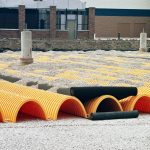
Three is the Magic Number
Stuart Crisp, UK manager of Advanced Drainage Systems (ADS), looks at looming legislation which will mandate SuDS and their adoption will require new skills for developers and designers.
In January 2023, the Government announced plans to finally implement Schedule 3 of the Flood and Water Management Act 2010, which will make the adoption of SuDS mandatory in England, as it has been in Wales since 2019. This is a game-changer for SuDS.
While developers currently have the right to connect drainage systems into sewers, that is unlikely to be the case anymore, without prior justification and consent.
Instead, they will have to show that they have included SuDS in their schemes and demonstrate how that SuDS system can be maintained over the lifetime of a development.
Subject to a consultation later this year, implementation of Schedule 3, which includes SuDS approval and adoption, is expected in late 2024. This means that there is less than two years for concerned professionals to get up to speed with the range and implications of possible solutions, both above and below ground.

Designers will have to think about more than just hydraulic design, to include whole life maintenance and treatment train to deal with water quality issues and specific pollutants. There will probably be a transition period as Schedule 3 comes in, but it makes sense to upskill now in order to future-proof designs.
Currently, SuDS can be adopted by water companies as long as systems comply with the Design and Construction Guidance (DCG) which sets out how SuDS should be delivered. However, it is not compulsory for a developer to jump through the adoption hoops. The end result is that some assets that do meet prescribed and consistent standards of quality and performance, may not be properly maintained and consequently there are problems down the line.
DCG was updated last year to include arch-shaped below-ground attenuation structures. One such system offers a flexible and cost-efficient alternative to other below-ground attenuation structures such as crates or large-diameter pipes, with the benefit of built-in stormwater quality management, reducing the extent of additional treatment required elsewhere in the SuDS system.
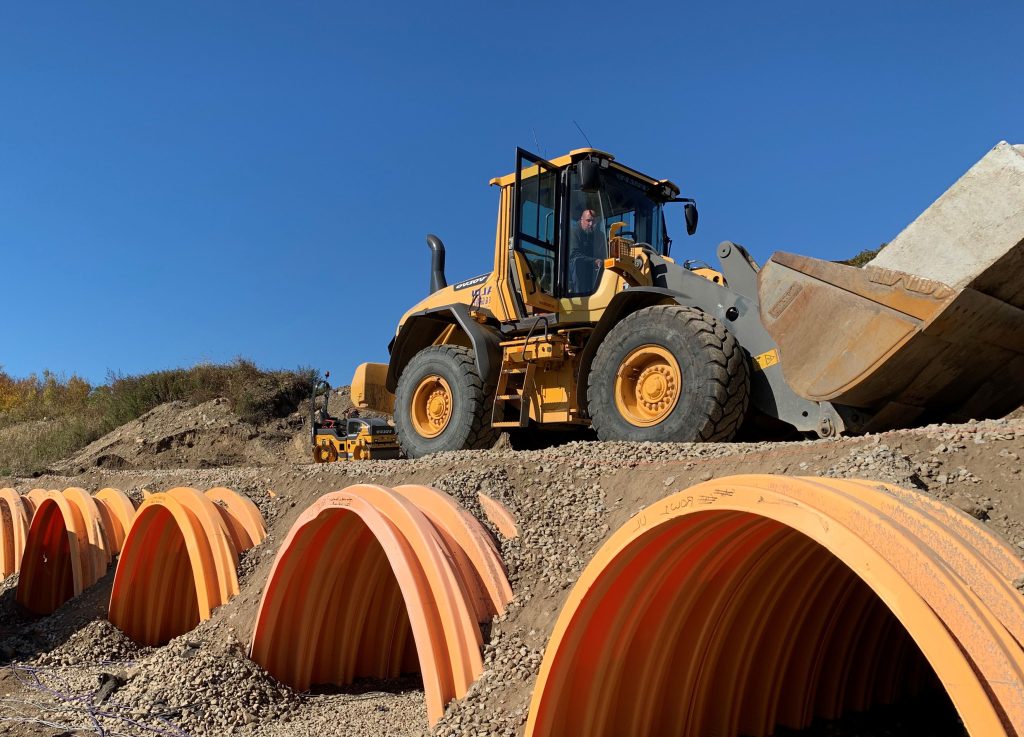
It is expected that Schedule 3 will change the assessment and adoption of SuDS to become SuDS approving bodies (SABs) which will be within unitary councils or county councils. And it will bring in new statutory guidance, taking over from DCG to cover design, construction and operation over an asset’s lifetime.
The statutory requirements in England may be more onerous than both DCG and the current non-statutory standards in terms of what will be acceptable for planning approval and adoption after construction. SuDS adoption becoming mandatory, with few exceptions, will raise the bar. Happily, poor quality products and poorly executed designs are likely to be challenged and disappear from the market.
For anyone looking to start the upskilling process now, training and CPDs are already available from some manufacturers and should include information on legislation, best practice and comparable systems.
For more information on Advanced Drainage Systems, visit www.adspipe.co.uk.
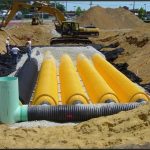
Water Qualitatively and Quantitively
Stuart Crisp, UK manager of Advanced Drainage Systems (ADS), looks at how ‘good’ SuDS addresses water quality as much as water quantity when it comes to managing water down a ‘treatment train’.

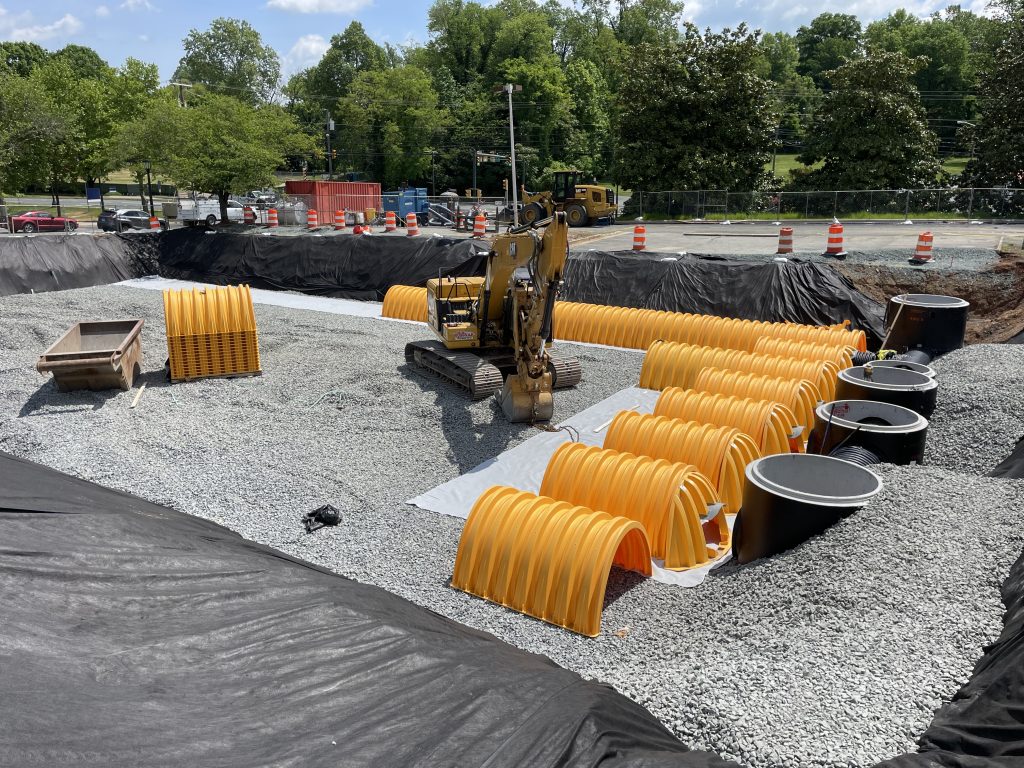
Historically, driven by legislation, there’s a tendency to focus on water quantity – how to use SuDS to reduce or delay release of stormwater into sewers and prevent flooding. However, new legislation requires the additional focus on water quality. The SuDS treatment train considers water quality and prevention of pollution from stormwater runoff (alongside flood risk mitigation), with the level of treatment provided based on the anticipated levels and types of pollution.
A SuDS treatment (or management) train should start with prevention such as reducing impermeable surfaces, to reduce run-off and remove sources of pollution. Next comes source control, where rainfall is dealt with close to where it falls by infiltration-based elements such as soakaways, rain gardens and permeable pavements. Site control sees water managed within a local area, for instance directing water to a soakaway or infiltration device and then onto an attenuation pond or tank. Finally, regional control would see a system that could handle run-off from several sites, perhaps resulting in a detention basin or wetland.
The SuDS Manual, C753, published by CIRIA, prescribes a risk-based approach to designing SuDS for water quality. If pollution risks are deemed to be low, then SuDS designers can prioritise water quantity, amenity and biodiversity. If they are medium, then all considerations must be balanced. And if they are high, water quality evaluation must take precedence. It should however be noted that in all cases, including medium and low pollution risk sites, appropriate mitigation should be put in place to reduce the risk of pollution.
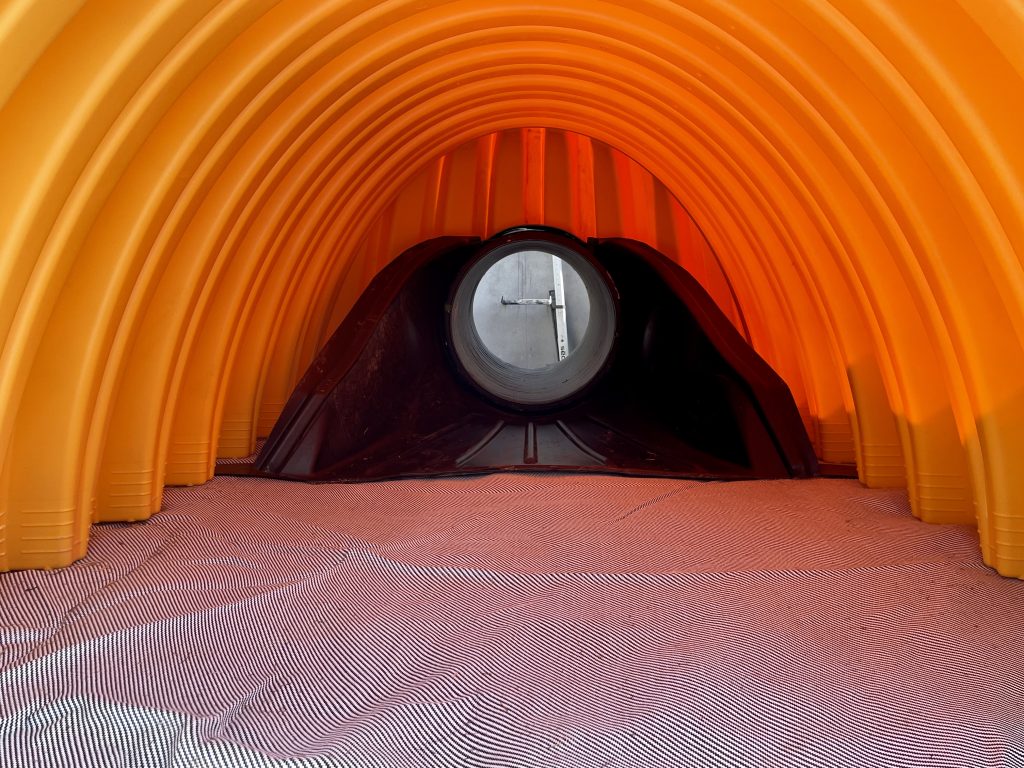
There is a range of water quality treatment measures that can be included in a SuDS train. Sometimes it is possible to use a completely natural SuDS train to deal with both water quantity and quality issues. At other times, the best solution combines natural and engineered SuDS elements, or may require proprietary manufactured elements only. This could be due to high levels of pollution loading or the space available.
There are four main types of pollutant that can be found in stormwater run-off: sediments, metals, hydrocarbons and nutrients. Sediments, often referred to in pollution mitigation as total suspended solids (TSS), is particulate matter. It includes tiny particles of soil, such as silt and clay, which have been dislodged by rainwater as it passes over the run-off surfaces.
Metals and metal compounds can be dissolved in run-off or attached to silts and sediments in the water. Copper and zinc are most commonly found in surface water in the UK but there can be cadmium and other toxic metals too. Although plants require very small amounts of copper and zinc to grow, higher concentrations can be damaging to them.
Hydrocarbon pollution comes with run-off from roads, car parks and areas where machines operate and are maintained, due to oil and fuel spills, tyre and brake wear. Changing climate means that rainfall events can be further apart but more intense, which can lead to higher concentrations of pollutants from roads, as they build up for longer before being washed away.
Nutrient pollution, usually nitrogen or phosphorous based, can come from sources such as run-off from agricultural land where fertiliser has been used or combined sewer overflows (CSOs), where sewage and surface water are mixed and discharged into bodies of water. They can lead to algal blooms, which reduces oxygen levels in the water and can negatively impact on aquatic habitats.
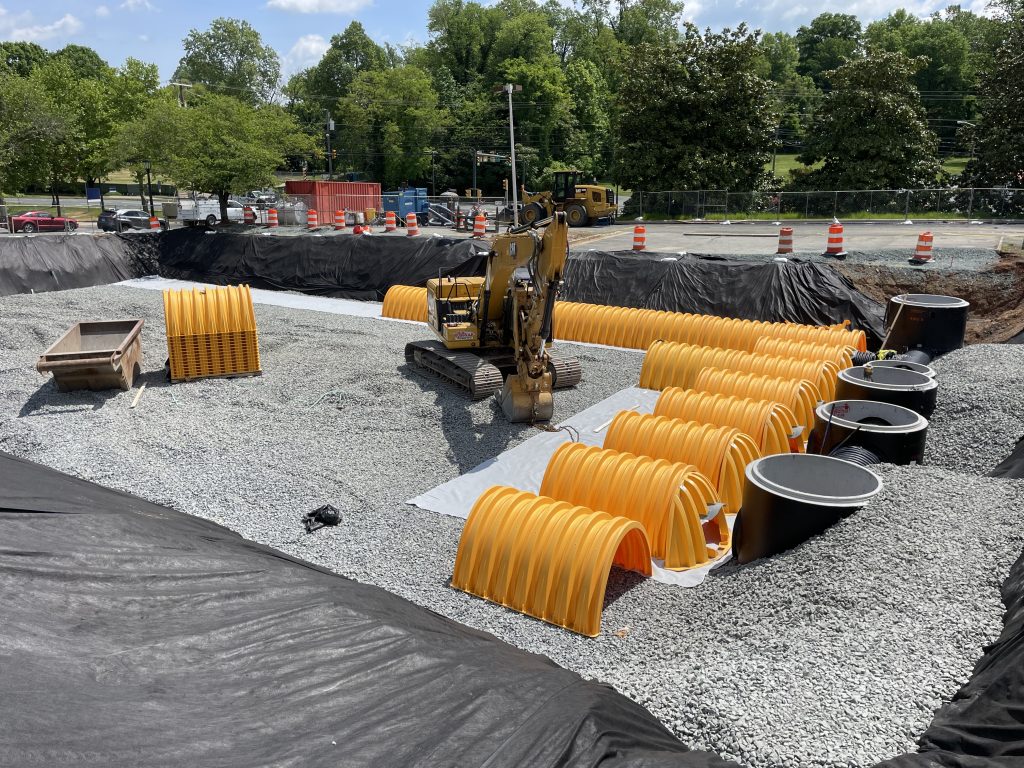
Capturing TSS pollution should generally be the focus of water treatment strategies in SuDS design since this removes both the solid particles and any pollution clinging to them. This can be done using a natural SuDS feature, such as planting for bioretention or a swale. Manufactured components such as filtration devices, silt traps or vortex separators can also be used upstream to remove solids before water is discharged into ponds, for instance.
Removal of sediment and solids is also important from a water quantity perspective. Build-ups reduce the capacity of a water storage element, whether natural or manufactured. How and when to remove sediment should be considered at the design stage and should be part of a planned maintenance regime.
Without a means of reducing suspended solids upstream of an attenuation device, sediment build-up within the device can reduce its efficiency over time. Some recently introduced underground arch-shaped SuDS attenuation devices have their own built-in systems for intercepting solids which are fast and simple to maintain.
Mitigation indices
The SuDS Manual sets out a simple method for dealing with water pollution risks, requiring the determination of pollution hazard indices for the area under consideration and then matching a SuDS device with matching mitigation indices.
In Table 26.2, the manual provides pollution hazard indices for a range of applications and for three types of pollution: TSS, metals and hydrocarbons. So, for example, for a busy public car park such as a supermarket or hospital, the index for TSS is 0.7, for metals is 0.6 and for hydrocarbons 0.7.
The next step is to identify a form of SuDS treatment that can provide the necessary mitigation indices, either as a single treatment stage or using a combination of components. The Manual has a table for that too, Table 26.3. However, this table only provides mitigation indices for natural SuDS components. The mitigation indices for the natural SuDS components were compiled by a team of experts, drawing information from a selection of published papers.
Mitigation indices for proprietary manufactured treatment systems must be provided by the manufacturer using recognised test methods and 3rd party verified data.

British Water has published a Code of Practice for the Assessment of Manufactured Treatment Devices Designed to Treat Surface Run-off. It uses rainfall time-series data for the UK to determine an appropriate treatment flow rates based on first-flush principles and uses a combination of two established test protocols – the German Deutsches Institut für Bautechnik (DIBt) and the New Jersey Corporation for Advanced Technology (NJCAT) from the US – to create the British Water test methods.
In 2022 British Water published a ‘how to’ guide, Applying The CIRIA SuDS Manual (C753) Simple Index Approach To Proprietary/Manufactured Stormwater Treatment Devices, which provides a calculation methodology to derive mitigation indices for TSS, metals and hydrocarbons based on the British Water Code of Practice, or the DIBt or the NJCAT, test results. This enables manufacturers of proprietary treatment products to have their mitigation indices published so that they can be considered as part of a SuDS management train.
British Water publishes a List of Assessed Surface Water Treatment Devices. More details on the British Water web site.
For more information on Advanced Drainage Systems, visit www.adspipe.co.uk.

